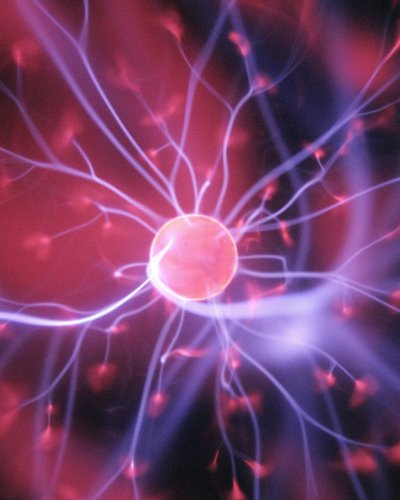The SCARF model of neuroleadership
David Rock’s “SCARF” model can help us better understand human interactions and interact more harmoniously. Five key factors that influence our brain during social encounters are particularly important.
What happened so far :-)
A new blog post is coming up, and I'm excited to present you more exciting findings about the brain today. After we have already discussed special features of the brain and the stress response of the body, today we are dedicated to the “SCARF” model by David Rock. He developed a model to positively influence cooperation and interaction with others.
There and gone.
Exciting articles on social interaction and its effects on the brain were published in the NeuroLeadership Journal in 2008. Lieberman and Eisenberger showed in “The pains and pleasures of social life” that the brain reacts to social pain similarly to physical pain.
Thus, words hurt a counterpart in the same way as hitting someone. This is reflected in everyday phrases such as: “Words are like weapons”, “Poisonous remarks”, “Cutting remarks” or “Hurt with words”. Research on the reward system also indicates that it responds equally to social and physical rewards.
When our social needs are being satisfied, the brain responds in much the same way as is responds to other rewards that are more tangible.
When all social needs are met, and we are in a threat-free environment, the brain is open to (social) rewards. Before that, however, it remains in a rejecting state. Thus, threat avoidance forms the basis for harmonious coexistence.
For those who want to dive deeper into the topic, all relevant sources can be found at the end of the blog post.
We don’t expect someone with a broken leg to ‘just get over it.’ And yet when it comes to the pain of social loss, this is a common response. We intuitively believe social and physical pain are radicallydifferent types of experiences, yet the way our brains treat them suggests that they are more similar than we imagine.
The SCARF model
David Rock, a well-known expert in neuroscience and head of the NeuroLeadership Institute, took these insights from neuroscience and social psychology and combined them into a handy, and admittedly easy to sell, “SCARF” model. The idea is that people tend to evaluate situations and interactions in ways that satisfy their needs in five domains.
The SCARF model refers to five core domains that are important to human behavior. If one or more of them is devalued, a negative response is likely. However, if these domains are strengthened and consciously supported, cooperation—including learning—is encouraged.
Each of us responds to a threat in our own way. If you like, you can fill out an online questionnaire at the NeuroLeadership Institute to get some clues about your own possible behavior here.
Status
How important is the role and position of a person in a group? What is the perception of one's own position in the social structure?
Treats |
Rewards |
| Criticize a person publicly | Give recognition and praise for achievements |
| Overemphasize successes and achievements of others | Assign responsibility and decision-making authority |
| Passing someone over when making decisions | Offer opportunities for personal development |
Certainty
How confident or insecure does a person feel in a given situation? The brain is a prediction machine. It is continuously busy predicting possible outcomes of situations to detect potential threats in time. The better it can do this, the safer and more comfortable we feel.
Threats |
Rewards |
| Provide unclear and contradictory information | Provide clear communication and transparent information |
| Constantly change plans and goals | Create stable structures and processes |
| Express vague or imprecise expectations | Set reliable and realistic goals |
Autonomy
How much control does a person have over their environment and their choices? Can you shape and control your environment, or are you a pawn in the situation?
Threats |
Rewards |
| Micromanagement and constant control | Freedom to make decisions and work creatively |
| Making decisions without the participation of those affected | Enable participation in decision-making processes |
| Rigid specifications and lack of flexibility | Promote flexibility and individual approaches to solutions |
Relatedness
How strong is a person's connection to other people? This is about the need for social belonging and connection.
Threats |
Rewards |
| Exclusion or isolation of individuals | Promote teamwork and cohesion |
| Stirring up conflict and mistrust | Practice empathy and active listening |
| Negative or derogatory communication | Regular joint activities and events |
Fairness
How fairly is a person treated in a given situation? This domain concerns the need for fair and equitable treatment.
Threats |
Rewards |
| Preferential treatment or discrimination of certain persons | Apply transparent and comprehensible criteria |
| Non-transparent decisions and distribution of resources | Open communication about decision-making processes |
| Apply inconsistent criteria and standards | Promote equal opportunities and equal treatment |
An attempt at a conclusion
A good application of the SCARF model in the workplace can be of great importance. It helps leaders and teams develop a more profound understanding of human interactions and behaviors. It leads to more positive and effective collaboration by considering people's needs and reactions. One result should be a more harmonious and productive work environment in which threats are minimized and rewards maximized. It is a powerful tool to understand and improve the human side of the work environment.
In addition to the world of work, the SCARF model can significantly enhance our personal lives. It can help us improve our interactions and relationships with family, friends, and partners. By understanding how certain behaviors and situations affect our needs, we can act more consciously and empathetically in our personal relationships. Overall, the model supports us in maintaining more harmonious and fulfilling personal relationships.
- Book: Lieberman, M. D. (2014). Social: Why Our Brains Are Wired to Connect. Crown.
- Article: Lieberman, M. D., & Eisenberger, N. I. (2008). The pains and pleasures of social life: a social cognitive neuroscience approach. NeuroLeadership Journal, 1(1), 38-43.
- Article: Rock, D. (2008). SCARF: A brain-based model for collaborating with and influencing others. NeuroLeadership journal, 1(1), 44-52.
- Link: NLI SCARF Assessment - https://neuroleadership.com/research/tools/nli-scarf-assessment/
- Photo: RhondaK Native Florida Folk Artist on Unsplash



